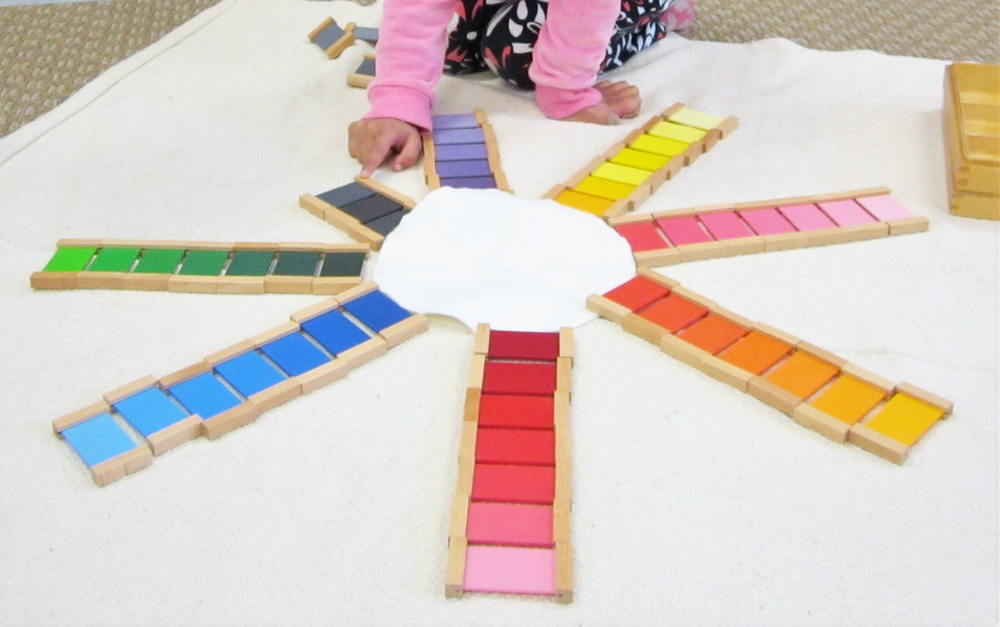
Children are fascinated with color, and learning to name and distinguish colors is one of those early skills parents delight in observing. Maybe you've shared the classic Brown Bear, Brown Bear, What Do You See? with your child. Maybe bedtime has included My Many Colored Days or The Day the Crayons Quit. Color is an accessible way for children to learn to discern differences in their environment, to understand their worlds with more specificity and to orient themselves. Indeed, while we may not think twice about the importance of learning about color, while we may think of it as a fun and engaging, but simple, skill, for children, discerning color is a key to orienting themselves to the world around them. As Montessorians, we know that the need to orient ourselves is a deeply held developmental drive, and one which we must support in the prepared environment of the classroom.
Montessori's formal lessons on color discernment begin with the Color Tablets, a series of three boxes of increasing complication. The first box includes only six tablets, small, handheld pairs of red, blue and yellow tablets that the child can use to learn the names of the primary numbers and match them. The second box includes twenty-two tablets: the primary and secondary colors, plus brown, white, pink, black and grey. The final box, Color Box 3, includes sixty-three tablets, constructed of seven shades of nine colors: the primary colors, the secondary colors, brown, pink and grey.
In early exercises, the child matches pairs. As the child develops the ability to discern more nuanced distinction, the number of pairs increase. Finally, the child is able to create spectra of colors from darkest to lightest. Throughout, the child is introduced to the labeling language for each color, plus the superlative language comparing colors to each other.
The shape of the color tablets derives from their original form: as spools of thread. Extensions using actual spools allow for children to distinguish ever more subtle distinctions. Beyond the basic ability to name, match and categorize color, children will often explore the color tablets to create beautiful extensions and designs. They may turn the tables on their side or create new designs. They may play distance games with friends or a teacher or find objects in the classroom to match to the tablets. Throughout, children's ability to discern differences in their environment, and thus to understand their environment and orient themselves to it more fully, grows and blossoms.
#Sensorial #ForParents #ForTeachers #Curriculum #FirstPlane #Primary
